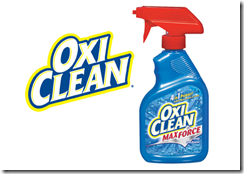My 13 New Year's resolutions for the NFL
/On the heels of my own list of New Year's resolutions comes my proposed resolutions for the National Football League.
There are many serious issues that the NFL needs to address. This list does not touch upon the more complex and serious issues facing the NFL but seeks only to increase a fan's enjoyment of the game.
Most of these proposals are relatively simple to adopt and should be implemented immediately.
- Digitize NFL tickets. The fact that NFL ticket holders must possess a physical ticket on game day in order to gain access to the stadium is ridiculous.
- Play at least one NFL game on Christmas Day regardless of the day of the week.
- Play at least one NFL game on New Year's Day regardless of the day of the week.
- Broadcast two 1:00 games and two 4:00 games every Sunday without exception. Why this isn't happening already is beyond me.
- Increase the height of the goal post by at least 20 feet. Someday soon, an important playoff game will be decided by a questionable field goal that is kicked higher than the current goal posts and will be misjudged by the referees. Field goal kicks above the posts are also not reviewable.
- Expand NFL rosters by at least 10 players. Injuries play too important a role in the fates of NFL teams. Mitigate this impact as much as possible with expanded rosters.
- Build a tunnel under Route 1 or a foot bridge over Route 1 adjacent to Gillette Stadium in at least three locations so pedestrians from the parking lots can cross the road without having to stop traffic. (Apologies. I know this is very New England Patriots specific).
- Allow NFL fans to vote out one NFL commentator per year if he or she receives at least 25% of the vote.
- Cease all mention of the preempting of 60 Minutes during the 4:00 CBS telecast. NO ONE IS EVER WONDERING WHY 60 MINUTES HASN'T STARTED.
- Cease all commercial breaks immediately following a kickoff.
- Cease all indoor football games. Football is meant to be played outdoors. If they can play football outdoors in Green Bay, Wisconsin, it can play it anywhere.
- Modify the pass interference penalty. Pass interference penalties shall no longer be spot fouls. The subjective nature of this penalty too often flips the field and completely changes the game based upon the opinion of a referee. Pass interference should be penalized as half the distance of the intended pass with a minimum of 10 yards and an automatic first down.
- Offer Super Bowl tickets to the fans of the Super Bowl teams first.







